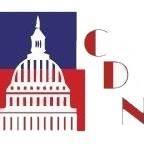


The devastating loss of Grand Canyon Lodge isn’t a reason to put new restrictions on good fire.
The North Rim of Grand Canyon National Park is a marvel. A few summers ago, a friend and I took our sons there and drank in the remarkable views. Personally, I found it more breathtaking than the heavily trafficked South Rim. The historic Grand Canyon Lodge was also impressive.
Earlier this month, the National Park Service announced that the Dragon Bravo Fire had destroyed the lodge and dozens of other structures. Fortunately, all guests and staff had been evacuated, and there were no fatalities. The North Rim will remain closed for the rest of the year.
The political fallout from this fire will likely last longer than that. Lightning started the Dragon Bravo Fire on July 4. Federal officials originally decided to manage the fire. In hindsight, that was a mistake. Unexpected wind gusts spread the fire rapidly. Leaking chlorine gas from the water treatment plant also forced firefighters to retreat. The result was a devastating loss of this landmark.
Arizona politicians are already attacking the federal government’s actions. Arizona’s Democrat Senators, Ruben Gallego and Mark Kelly, penned a letter to Interior Secretary Doug Burgum. They questioned why the fire was allowed to continue burning, especially given how hot the Arizona summer has been.
It will be productive to seek answers about this specific fire. But it’d be destructive to use this tragedy as a reason to limit controlled burns in the future.
Forest fires are natural. There are two primary ways to respond to this uncomfortable reality. The first is to proactively use good fire — prescribed burns — to eliminate the buildup of dead vegetation and obtain other ecological benefits. Intentionally setting fires is especially common in the Southeast. As of mid-July, more than 1.3 million acres have burned in Georgia from more than 61,000 controlled burns. It’s had less than 23,000 acres burn from wildfires, according to federal data. It had similar numbers last year. The downside is what happened in Arizona.
In contrast, forest fires in the West are usually suppressed as soon as possible, the second response. The benefits of this policy are obvious. You stop fire as soon as possible and avoid high-profile failures like the one at the North Rim. But there’s a long-term cost. The fuel that controlled burns would have eliminated builds up over years or decades.
“That’s a de facto policy for the hottest possible fires, where the only large fires that burn are those too hot to stop,” Taylor McKinnon, Southwest director for the Center for Biological Diversity, told The Arizona Republic.
Think of the 2018 Camp Fire in California, which killed 85 people and destroyed more than 18,000 structures. Or California’s 2020 August Complex fire, which burned more than 1 million acres.
The original Grand Canyon Lodge opened in 1928, but burned down in a 1932 kitchen fire. It was rebuilt, as this one should be. Once it reopens, officials should proactively use controlled burns to protect it.
